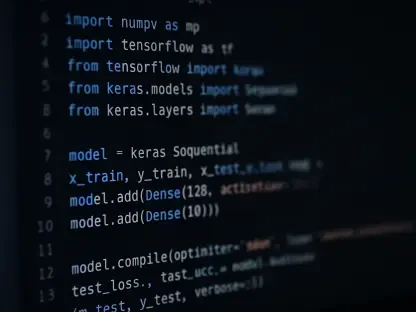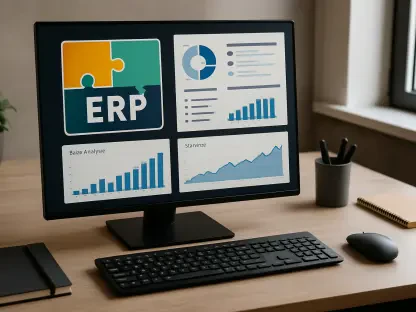Overview of the DevOps and Cybersecurity Industry
In today’s fast-paced digital ecosystem, DevOps has become synonymous with speed, agility, and continuous delivery, enabling organizations to push software updates at an unprecedented pace. However, this velocity comes with a stark reality: cyber threats are evolving just as quickly, with attackers exploiting vulnerabilities within mere hours of disclosure. The cybersecurity market, currently valued at over $256 billion, underscores the scale of this challenge, as businesses grapple with zero-day exploits and complex software stacks. Patch management, often overlooked in the race to deploy, stands as a critical defense mechanism, bridging the gap between rapid development and robust security. This report dives into why integrating patch management into DevOps workflows is not just a best practice but an absolute necessity for safeguarding systems and maintaining trust in an era of relentless cyber risks.
The intersection of DevOps and cybersecurity reveals a pressing need for seamless processes that do not compromise on speed or safety. With software environments growing in complexity, encompassing cloud-native architectures and sprawling dependencies, the attack surface has expanded dramatically. This dynamic landscape demands more than traditional, reactive approaches to vulnerability mitigation. Instead, it calls for proactive strategies that embed security into the very fabric of development pipelines, ensuring that patches are applied swiftly and effectively to thwart potential breaches before they materialize.
In-Depth Analysis of Patch Management in DevOps
Understanding the Role of Patch Management in DevOps
Patch management serves as a foundational element in the DevOps ecosystem, aligning with the principles of continuous integration and delivery while addressing the inherent risks of rapid deployment cycles. As software stacks become increasingly intricate, incorporating microservices, containers, and third-party libraries, the potential for vulnerabilities multiplies. Effective patch management ensures that these weaknesses are identified and resolved promptly, preventing them from becoming entry points for malicious actors in high-velocity environments.
The significance of this practice is amplified by the cybersecurity market’s growth, driven by the urgent need to combat zero-day vulnerabilities that can cripple systems within hours. Tools such as CVE scanners and Software Bill of Materials (SBOM) frameworks have emerged as vital allies, providing visibility into dependencies and enabling teams to prioritize remediation efforts. By integrating these solutions into CI/CD pipelines, DevOps teams can catch issues early in the development cycle, embedding security as a core component rather than an afterthought.
Moreover, the adoption of automated patch management tools reflects a broader shift toward efficiency and scalability in modern software delivery. These technologies reduce human error and accelerate response times, allowing organizations to maintain the pace of innovation without sacrificing protection. As DevOps continues to evolve, patch management stands out as a linchpin that balances the dual imperatives of speed and security in an increasingly hostile digital landscape.
The Growing Importance of Patch Management in Cybersecurity
Key Trends Shaping Patch Management Needs
The cybersecurity realm is witnessing an alarming acceleration in the speed of threat evolution, with attackers capitalizing on vulnerabilities almost immediately after they are made public. This rapid exploitation window leaves little room for hesitation, pushing DevOps teams to adopt patch management as a frontline defense. The trend underscores a fundamental reality: manual processes are no longer viable in environments where delays can result in catastrophic breaches.
Another defining trend is the rise of automation and observability tools, which have become indispensable for managing the sprawling complexity of software ecosystems. These solutions enable real-time monitoring and swift identification of vulnerabilities, ensuring that patches can be deployed before threats escalate. Their integration into DevOps workflows highlights a growing recognition that visibility and responsiveness are critical to maintaining system integrity.
Additionally, the industry is shifting toward DevSecOps, a paradigm that embeds security at every stage of the development lifecycle. This approach redefines patch management as a continuous, collaborative effort rather than a siloed task, fostering accountability across teams. By aligning security practices with development goals, DevSecOps ensures that vulnerabilities are addressed proactively, minimizing risks without derailing delivery timelines.
Market Insights and Future Projections
Data from the cybersecurity sector reveals a stark increase in the frequency and sophistication of vulnerability exploitation, fueling market expansion as organizations invest heavily in protective measures. The demand for automated patch management solutions is projected to surge over the next few years, with significant growth expected from 2025 to 2027 as more businesses integrate these tools into their CI/CD pipelines. This trajectory reflects a broader acknowledgment of the need for scalable, efficient security practices.
Future projections also point to a steep rise in DevSecOps adoption, positioning it as a key driver for securing DevOps environments. As companies prioritize embedding security into their workflows, patch management will likely become a central focus, supported by innovations in automation and dependency tracking. These advancements promise to streamline remediation processes, reducing the window of exposure to potential threats.
The market’s evolution suggests that organizations failing to adapt risk falling behind, both in terms of security posture and competitive edge. Investment in patch management technologies is not merely a defensive measure but a strategic imperative, enabling firms to navigate the complexities of modern software delivery while safeguarding critical assets against an ever-growing array of cyber risks.
Challenges in Implementing Effective Patch Management
Implementing patch management within DevOps frameworks is fraught with hurdles that can undermine even the most well-intentioned efforts. One primary obstacle is the sheer speed of threat response, which often outpaces manual or semi-automated processes. This discrepancy creates a dangerous lag, leaving systems exposed to exploitation during critical windows of vulnerability.
Another challenge lies in the potential disruptions caused by untested patches, which can introduce new issues or destabilize existing systems. The fear of breaking functionality often leads to hesitation, delaying essential updates and compounding risks. To mitigate this, strategies like canary releases and automated rollback mechanisms offer controlled environments for testing, ensuring that patches are validated before full deployment.
The complexity of managing dependencies in contemporary software stacks further complicates matters, as nested or indirect components can harbor hidden vulnerabilities. Addressing this requires a combination of automation for comprehensive scanning and cultural shifts to normalize routine patching. By fostering a mindset where updates are treated as standard practice, organizations can minimize operational friction and enhance overall resilience against cyber threats.
Compliance and Security Standards in Patch Management
Navigating the regulatory landscape is a critical aspect of patch management, as compliance with security standards directly impacts an organization’s credibility and risk profile. Frameworks such as those aligned with the National Vulnerability Database (NVD) provide essential guidance, establishing benchmarks for identifying and addressing vulnerabilities. Adherence to these standards ensures that DevOps teams maintain a robust security posture amid evolving threats.
Automated scanning and metrics like Mean Time to Patch (MTTP) play a pivotal role in meeting compliance requirements, offering measurable insights into patching efficacy. These tools enable organizations to demonstrate accountability, a key factor in building trust with stakeholders and regulators. Consistent monitoring and reporting also help identify gaps in processes, allowing for continuous improvement in security practices.
Beyond regulatory mandates, aligning patch management with industry best practices strengthens organizational defenses and fosters confidence in DevOps workflows. A commitment to compliance not only mitigates legal and financial risks but also positions companies as reliable stewards of data and systems. This alignment ultimately enhances customer trust, a vital asset in today’s competitive digital marketplace.
The Future of Patch Management in DevOps Security
Looking ahead, patch management in DevOps is poised for transformation through emerging technologies that promise to redefine security paradigms. Advanced automation and AI-driven vulnerability detection are set to revolutionize how threats are identified and addressed, offering predictive capabilities that preempt exploits. These innovations will likely reduce response times even further, fortifying systems against sophisticated attacks.
Deeper integration into CI/CD pipelines is another anticipated development, ensuring that security checks are seamless and non-disruptive. Enhanced observability tools and Software Bill of Materials (SBOM) will provide granular visibility into software components, enabling precise remediation of dependencies. Such advancements are expected to make patch management a more intuitive and embedded aspect of software delivery.
Global cybersecurity trends will continue to shape DevOps practices, driving a collective shift toward routine patching and proactive defense. As teams adapt to these changes, a cultural embrace of security as an enabler of innovation will likely emerge. This mindset, coupled with technological progress, points to a future where patch management is not a burden but a strategic advantage in maintaining system integrity.
Reflecting on Findings and Next Steps
Looking back, this report highlighted the indispensable role of patch management in securing DevOps environments amidst a landscape of accelerating cyber threats. The analysis revealed how automation, integration, and cultural alignment form a robust framework for addressing vulnerabilities without sacrificing the speed that defines modern software delivery. Challenges such as rapid threat evolution and dependency complexity were acknowledged, yet actionable solutions like controlled rollouts and compliance-driven metrics stood out as effective countermeasures.
Moving forward, DevOps teams should prioritize the adoption of automated tools and observability solutions to stay ahead of risks, integrating these into daily workflows for maximum impact. Embracing a DevSecOps mindset will be crucial, ensuring that security becomes a shared responsibility rather than a siloed function. By tracking performance indicators like Mean Time to Patch and fostering routine patching practices, organizations can build resilience and trust, paving the way for sustained innovation in an increasingly hostile digital world.









